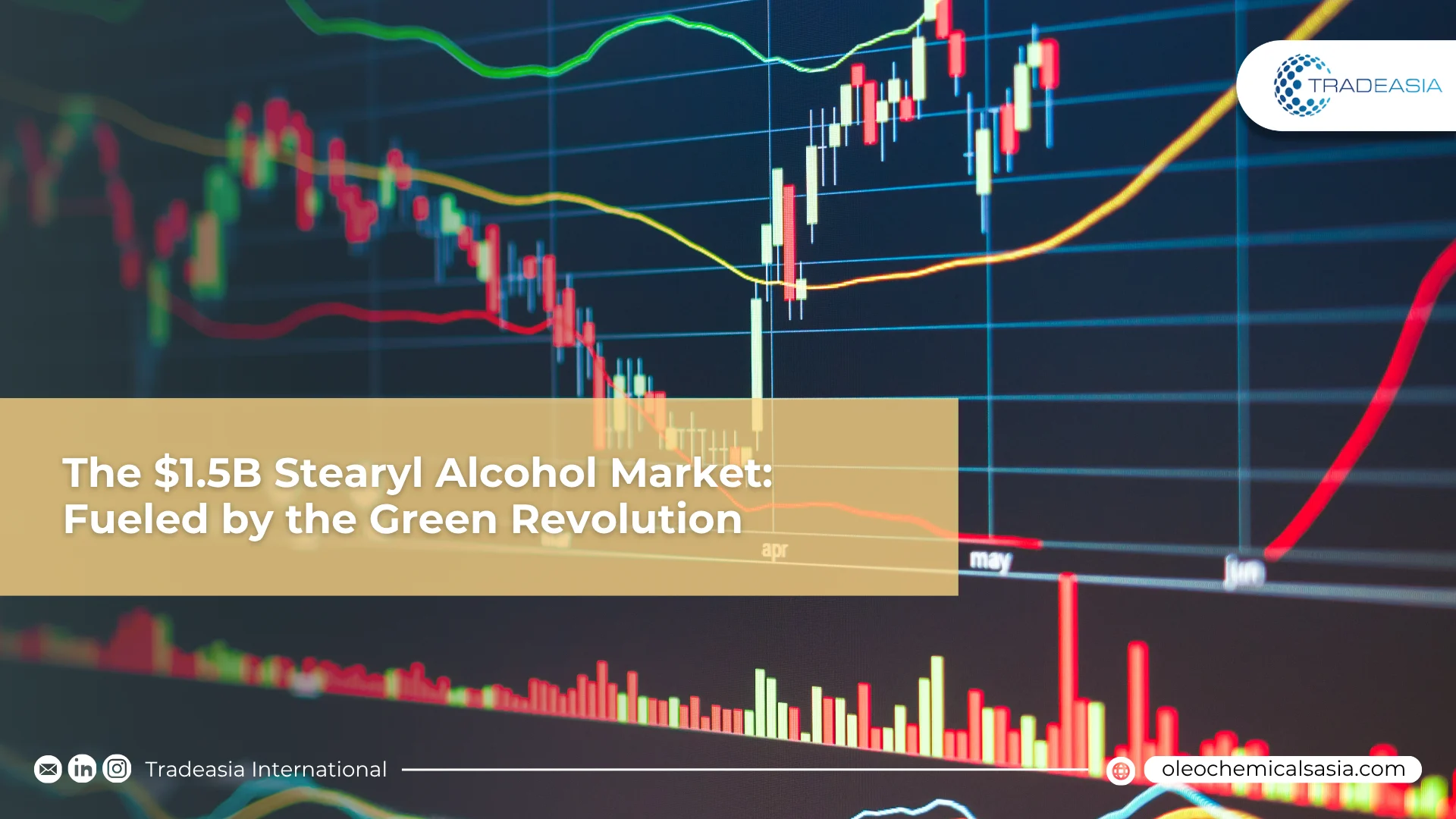Market Insight
21 October 2025
The $1.5B Stearyl Alcohol Market: Fueled by the Green Revolution
Palm Derivatives

Table of Content
-
The Green Tide: Why Oleo is Winning
-
APAC Leads the Charge, The West Demands Quality
Market Insight
21 October 2025
Palm Derivatives

The global Stearyl Alcohol market is not just growing; it's transforming. Valued at approximately $750 million in 2023, this essential oleochemical is on a clear and robust trajectory to more than double, with long-range forecasts projecting a market value exceeding $1.5 billion by 2040. This expansion isn't speculative. It's anchored by a steady 4.8% Compound Annual Growth Rate (CAGR) and a fundamental, irreversible shift in global manufacturing: the pivot away from petrochemicals.
This projected growth underscores a critical need for strategic sourcing. In an increasingly complex market, "stability is the new currency." At Tradeasia International, we've built our business on this principle. We leverage our deep, established network within the palm oleochemical sector to provide that stability, ensuring our global partners can confidently meet their long-term manufacturing demands without succumbing to supply chain shocks.
The data reveals a decisive market preference. Today, over 70% of all Stearyl Alcohol is derived from vegetable sources, primarily Palm Kernel Oil (PKO). By 2040, this share is expected to consolidate to over 85%. This transition is being aggressively driven by two powerful forces: stringent government regulations (like the EU's REACH) and powerful, non-negotiable consumer demand for "natural" and "plant-based" ingredients in their end-products. The petrochemical alternative is simply falling out of favor, unable to compete with the sustainable profile of its plant-based counterpart.
Geographically, the Asia-Pacific (APAC) region remains the undisputed epicenter, accounting for over 45% of global consumption. Driven by the booming cosmetics and industrial sectors in China, India, and Indonesia, the APAC market is projected to expand at an accelerated 5.5% CAGR. However, a different story is unfolding in the mature markets of Europe and North America. While their volume growth is slower at a projected 3.5% CAGR, these regions dictate value. Demand here is overwhelmingly for high-purity grades and, critically, RSPO-certified Stearyl Alcohol. These premium, sustainable grades often command a price premium of 10-15%, a clear signal that for Western B2B buyers, verifiable sustainability is no longer a bonus but a baseline requirement for market access.
Sources:
We're committed to your privacy. Tradeasia uses the information you provide to us to contact you about our relevant content, products, and services. For more information, check out our privacy policy.
Leave a Comment